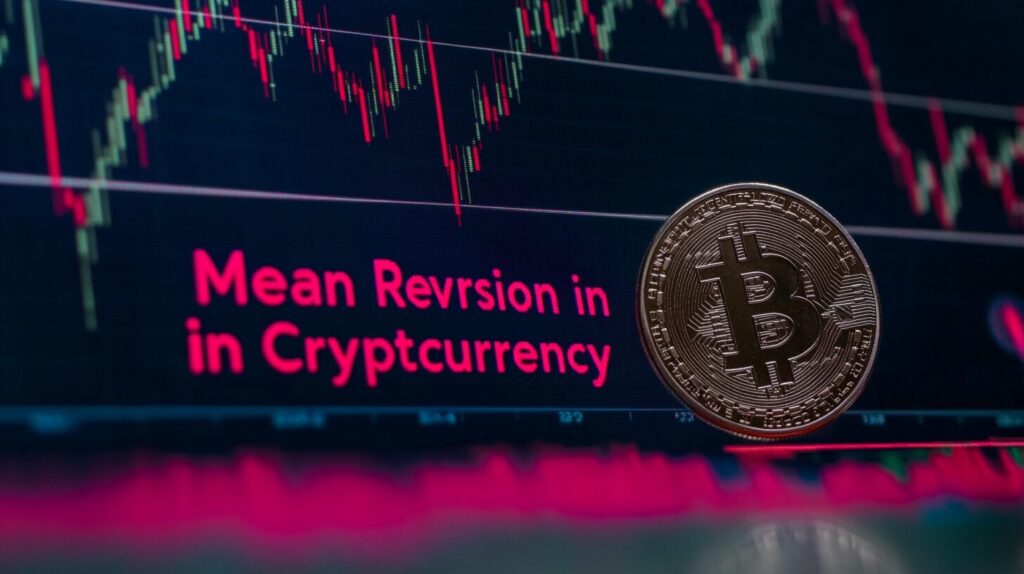Mean reversion is a key concept in the financial markets, particularly in cryptocurrency trading. It is based on the idea that asset prices, after deviating significantly from their historical average, tend to revert back to that average over time. Traders widely use this principle to predict price movements and inform their trading strategies.
Definition, Meaning, and Example of Mean Reversion Trading Strategies
Mean reversion trading strategies assume that prices will return to their mean or average value over time. Traders utilize this concept to identify potential buying or selling opportunities when prices deviate significantly from their historical averages.
For instance, if the price of a cryptocurrency drops far below its historical average, a trader might consider it a buying opportunity, anticipating a reversion to the mean. These strategies need careful analysis of market data and historical price trends to be effective.
What is the Rule of Mean Reversion?
The rule of mean reversion revolves around the idea that extreme price movements are temporary and will eventually return to a more stable state closer to the historical average. In the context of cryptocurrency, this rule is often applied to identify when an asset is either overbought or oversold.
Traders use this rule to guide their decisions, buying when prices are low (below the mean) and selling when prices are high (above the mean). However, it’s essential to note that while the rule of mean reversion can be useful, it is not foolproof and requires careful application.
How Does Mean Reversion Work in Crypto?
In the volatile world of cryptocurrency, mean reversion works by identifying price anomalies and predicting a return to the mean. This concept is particularly useful in markets like crypto, where prices can be highly erratic. Traders use multiple tools and indicators, such as moving averages, to spot when a cryptocurrency is trading significantly above or below its historical average.
The assumption is that the price will ultimately revert to the mean, allowing traders to capitalize on this movement. However, the inherent volatility of cryptocurrencies means that mean reversion must be applied with caution.
Why is Mean Reversion Important?
Mean reversion is important because it provides traders with a framework for understanding price movements and identifying potential trading opportunities. In the market of crypto, where prices can fluctuate wildly, mean reversion helps traders identify when an asset is mispriced relative to its historical average.
This can lead to profitable trading opportunities by buying low and selling high. Additionally, understanding mean reversion can help traders manage risk by avoiding buying into assets that are significantly overvalued.
Benefits and Disadvantages of Mean Reversion
Mean reversion trading strategies offer several benefits, including the potential for identifying mispriced assets and capitalizing on temporary price anomalies. These strategies can be particularly effective in markets with high volatility, such as cryptocurrency. However, there are also disadvantages to consider.
Mean reversion assumes that prices will return to their historical average, which may not always happen, especially in a market as unpredictable as crypto. Additionally, these strategies can be challenging to implement and need a deep understanding of market dynamics.
How to Build a Mean Reversion Trading Strategy?
Building a mean reversion trading strategy involves several key steps. First, traders must identify the historical average or mean price of the asset they are interested in. This can be done via tools like moving averages.
Next, they must determine the level of deviation from the mean that constitutes a trading signal. This might involve setting thresholds for how far the price can move away from the mean before it becomes a buy or sell signal. Finally, traders must implement risk management strategies. This will protect them against the possibility that the price does not revert to the mean as expected.
Is Mean Reversion Trading Profitable?
The profitability of mean reversion trading depends on several factors, including the accuracy of the mean price, the volatility of the asset, and the trader’s ability to identify genuine price anomalies. In the crypto market that prices can be aggressively volatile, mean reversion can be profitable if applied correctly.
However, it also carries risks, as prices may not always return to the mean, leading to potential losses. Traders must carefully consider these factors and use mean reversion in conjunction with other trading strategies to maximize profitability.
What is the Formula for the Mean Reversion Process?
The formula for the mean reversion process typically involves calculating the historical mean price and then identifying deviations from this mean. The formula can be represented as:
Mean Reversion=Current Price−Mean Price
Where the mean price is typically calculated using a moving average, the degree of deviation from this means indicates whether an asset is overbought or oversold, guiding trading decisions. However, the exact formula can vary depending on the specific strategy and the indicators used.
How to Calculate the Speed of Mean Reversion?
The speed of mean reversion can be calculated using statistical methods such as the half-life of mean reversion, which measures the time it takes for the price to revert halfway back to its mean. The half-life can be calculated using regression analysis, where the rate of reversion is estimated from historical price data. This calculation provides traders with insights into how quickly prices are likely to return to their mean, allowing them to time their trades more effectively. The formula is often represented as:
Half-Life=−ln(1+Mean Reversion Rate)ln(2)
This calculation helps traders understand the dynamics of price movement and the likely time frame for a reversion to occur.




